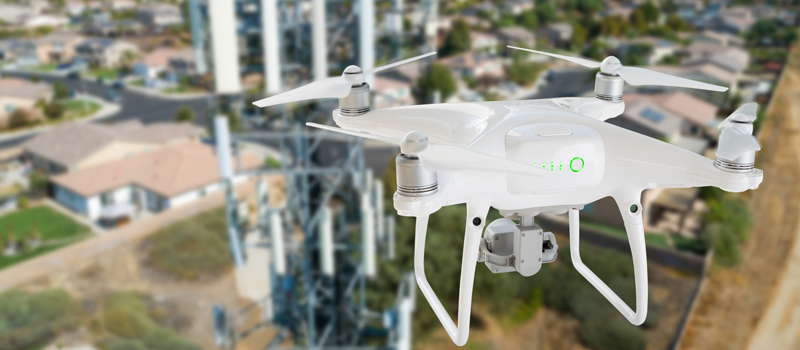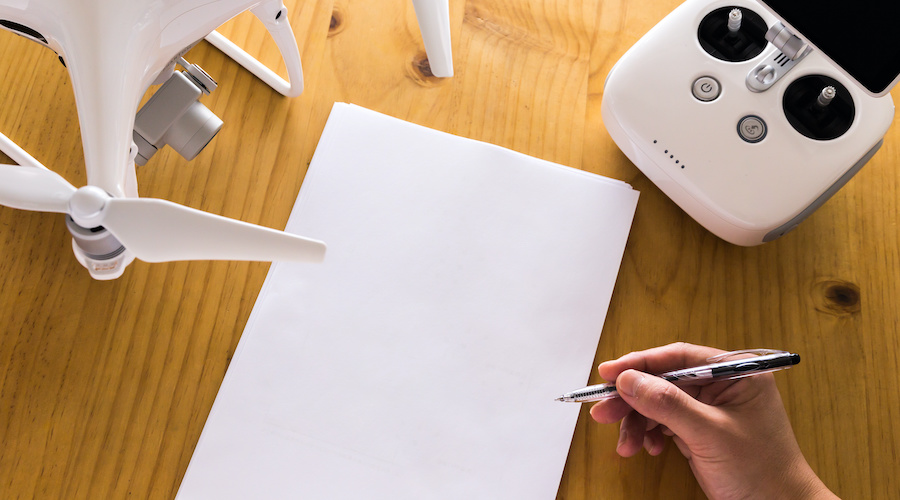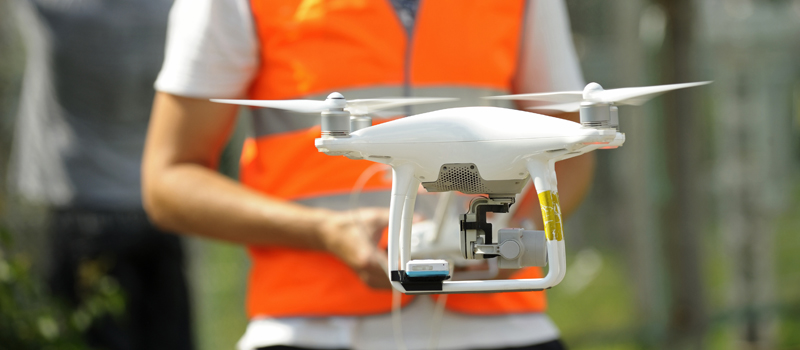-
What is a professional drone program?
-
What to include in a professional drone program
- Definition of objectives
- Designation of roles
- Equipment requirements
- Training requirements
- Associated risks and risk mitigation
- Legal compliance strategy
- Operational protocols
- Documentation requirements
- Change management
-
Final thoughts
As more industries realize how drones can be useful to them, more and more companies have undertaken efforts to integrate drones into their existing workflow. The biggest challenge facing these companies is that they typically deal with things that are far removed from aviation.
Just like in building a new group at work, establishing a program for drone use requires preparation, training, and documentation. There are even some legal issues involved that highlight the need for a well-prepared drone program. If you or your company is planning to adopt the use of drones, here are some tips for making sure that your professional drone program covers everything necessary.
What is a professional drone program?
While there is no standard in what should be included in a professional drone program, it is expected to cover the basic guidelines for how drones will be used in a company or corporation. The program is founded on the corporation’s objectives for using drones and outlining how they can achieve said goals, remaining cognizant of the expenses associated with these methods and the legal requirements of the process.
In most cases, a drone program is needed by a company because integrating drones as part of their operations is something new to them. They might not have the equipment nor the personnel for it and likely will have to spend substantially on acquisition and training. A program outlines how the company will start the implementation of drone operations by specifying the resources that will be needed and providing a schedule with clearly defined and realistic goals.
A program does not stop at the implementation of drone operations – it is also concerned with its sustainability. How the drone operations will continue beyond its initial roll-out should be covered by the drone program. This will involve equipment maintenance schedules, renewal of legal licenses, and recurrent training for personnel. If the operations are intended to only be a temporary phase, then this should also be specified in the program
Think of a professional drone program as a roadmap – a guide detailing the measures you need to take and identifying checkpoints to make sure that you achieve your goals. If your company is delving into something as novel as drone operations, then a well-planned program could be invaluable.
What to include in a professional drone program
Definition of objectives
Every good professional drone program starts by defining its objectives. Other companies call this the “mission” but essentially also pertains to the goal of integrating drone operations into a company’s standard workflow.
All subsequent parts of the drone program will be based on the objectives. This emphasizes the importance of placing a lot of thought into crafting well-defined objectives that are both measurable and realistic.
Sample objectives can include using drones to take aerial photos for real estate listings, or as a substitute for ground-based inspection of industrial facilities. In either case, there needs to be metrics defined to measure how successful the initiative is. Whether an initiative is successful or not must be determined based on the results of these metrics.
In the case of real estate, sales as a result of using aerial photos in advertisements can be monitored. In the case of industrial inspection, the goal can be to reduce the number of hours spent doing the inspection, thereby reducing the downtime for the facilities.
Designation of roles
For an initiative to work, there have to be specific people assigned to well-defined roles and responsibilities. The number of these roles will depend on the level of complexity of the planned operations.
Each role in the program must have defined responsibilities, deliverables, and qualifications. This will determine the suitability of each person to a designated role. If needed, the qualifications demanded by the role will also help in planning the training needs of the personnel.
Regardless of the scope of the operations, a professional drone program must be headed by a Drone Operations Manager or any equivalent title. This person will be in charge of overseeing the program, making concrete plans, and making sure that the objectives of the program are being met.
There can also be several managers assigned to the program, especially if it has to be implemented across several different regional sites. The Drone Operations Manager does not need to be an expert drone pilot. Instead, they need to excel in planning, project management, and communications. The Drone Operations Manager will also serve as the primary point of communication in case of an operations-related emergency.
Equipment requirements
Equipment is a critical part of a successful professional drone program. Depending on the planned operations, the needed equipment may go beyond just the drone. For industrial inspection, a custom payload with thermal cameras may have to be considered. For agricultural surveys, a multispectral sensor will greatly augment the data that can be collected.
Aside from the drone and payload, massive drone operations will also require a lot of accessories and supplies. This will include extra batteries, charging docks, carrying cases, replacement propellers, mobile devices, landing pads, repair tools, and a variety of replacement parts in case the drones get damaged.
The cost of equipment acquisition will likely be the most significant expense that goes towards a professional drone program. This will require a lot of planning, especially when it comes to recurring expenses like consumables. Companies with no experience in operating drones may have to consult third-party experts during this phase.
Training requirements
Companies that have never done drone operations before likely do not have many drone experts onboard. This will mean either having to train existing personnel or hiring new people to jumpstart the drone program. In any case, it will be important to define the qualifications and skills required of the people who will be handling drone operations on the field.
Training requirements will also depend on the complexity of the planned operations. For drone photography, there is likely no need to go beyond basic flight skills and aerial photography techniques. More technically demanding operations, such as inspection of power lines or thermography, may be performed better if the drone pilots go under certification training.
This section should also cover any certifications needed for legal compliance. Chief of this is the Part 107 remote pilot certification for commercial drone operations. Maintaining the certification requires recurrent training, which should also be indicated in the program.
Associated risks and risk mitigation
Risk management is an essential part of any industrial or commercial operations, especially when it involves innately risky activities such as drone flight. A list of anticipated risks should be part of the professional drone program, as well as a corresponding list of measures to mitigate said risks. This will likely require input from experts initially but evolve over the course of drone operations.
Coming up with a comprehensive risk program is an exercise of asking the question – “What if?” What if your drone runs out of battery mid-flight and crashes onto the roof of a house? What if it attacked by a flock of birds and falls into the bush? What if the drone pilot is approached by an irate bystander? Just coming up with this list of potential hazards will take considerable planning and forethought.
Most companies nowadays will include the provision for insurance into their risk management program. An insurance policy will protect the company from any financial obligations that can arise from a drone-related accident. Depending on the policy, this could apply to damage to the drone or to the property of others.
The coverage of the policy will depend in large part on the nature of the planned operations. If you’re flying around high-value infrastructures like luxury homes or communications towers, then you will want to apply for higher coverage. Certain drone activities, such as flying near power lines, will fetch a higher premium on account of being riskier.
Legal compliance strategy
The legal landscape for drone operations is in a state of rapid evolution. Nevertheless, a professional drone program must ensure that all operations comply with legal requirements.
At the most basic level, all pilots who will fly commercially must earn their remote pilot certificates. This is a requirement of the Part 107 rules on commercial drone flight. Additionally, all drones to be used for commercial operations must be registered with the FAA regardless of weight.
The drone program should also include procedures on addressing legal issues around having to fly in controlled or restricted airspace. Although such an issue is avoidable, having measures set in place will provide a lot of business flexibility.
Consideration of local rules should also be included in standard procedures. This may be challenging for companies who serve clients coming from different states and cities. A lot of operational flexibility will be needed here, as local rules on drone flight can vary greatly from one city or state to the next. Consulting an expert on aviation law could be handy in this phase of the development of the professional drone program.
Operational protocols
This section details the standard procedure that the drone operations crew must follow when conducting field operations. It should cover all aspects of the operation – planning, equipment maintenance, the actual drone flight, data processing, and delivery of results to the client.
Having a set procedure written in the drone program establishes a standard for all of the program’s operation. This should help ensure consistent quality of data and safety practices.
At the minimum, the standard procedure in a drone operations program should include the following items:
- Delineating the operations area
- Checking for airspace restrictions
- Confirmation of local laws
- Equipment check-up
- Flight crew orientation
- Pre-flight inspection
- Flight standards
- Data gathering standards
- Post-flight inspection
- Data processing standards
- Confirmation of deliverables by Operations Manager
The procedure also needs to mention the program’s safety standards consistent with the risk management profile. This includes the type of weather conditions for drone flight, visibility requirements, and the conditions that will require the drone pilots to do an emergency landing. You can also define particular “go or no-go” standards.
As with many parts of the program, the standard procedure should allow for some amount of operational flexibility.
Documentation requirements
Documentation is a huge part of establishing any system. It ensures that standards are established, results are recorded, and helps in keeping track of compliance requirements. It also helps with program continuity in case there are personnel changes within the organization or the program.
Although documentation requirements may vary based on the organization or the planned activity, certain documents are considered standard for any professional drone program. The following list is a good place to start, but you may expand it according to your needs:
- Program objectives
- Designation of roles and responsibilities
- Equipment list
- Equipment acquisition and disposal records
- Equipment maintenance schedule and records
- List of training certifications
- List of regulatory certifications
- Risk management standards
- Training records
- Training plan
- Standard operating procedures
- Pre-flight and post-flight inspection checklists
- Operational records
- Records of processed data and deliverables
- Incident reports
- Feedback from clients
- Change documentation
- Records of expenses
- Records of sales
The documentation requirements of a drone program may be as simple or complex as required by the activities under the program. Truthfully, there is no single way to carry out a drone program’s documentation. However, well-designed documentation must make it easy for records to be retrieved and reviewed. Data from the records should also help in assessing if the program is achieving its goals.
Change management
Any professional drone program, no matter how well-thought, will always have imperfections. When these are identified, the program needs to have a provision for revisions.
However, part of the documentation requirements of a functioning system is recording any changes made to any part of the program, why such changes were initiated, and any results (positive or negative) of the change. This is very important for drone programs that can extend several years as it gives the system a “memory” of how it has reached its current state.
A verification phase is essential to any implemented change. At this step, the effectiveness of the implemented change is assessed to determine if it should become the new standard or if the change needs to be reverted. Changes that were deemed ineffective and reverted must still be kept in the records – these are essential to ensure that mistakes are not repeated in the future.
Part of implementing a good professional drone program is for it to be reviewed and assessed regularly, especially if the program needs to continue for several years. Every time it is reviewed, it needs to be analyzed through the lenses of its objectives – are the objectives being met? If not, are there changes in the procedures that could help solve the problem? Perhaps the objectives are not realistic to start with? A good sense of introspection and honesty is critical in making sure that a system works and will continue to work in the foreseeable future.
Final thoughts
Now that companies are being more open to using drones to augment or enhance their day-to-day activities, it becomes more they learn how to integrate drones into their workflow in the proper way. After all, going into drone operations can be a huge investment for any company, in terms of both the acquisition of equipment and hiring or training of personnel.
There’s also the myriad of policies that a company needs to consider when they do commercial drone operations. Much of this can be unfamiliar to a company that has never had to deal with aviation-related matters before.
As with any new prospect, planning is the key to ensuring success. With this in mind, it’s utterly important to come up with a concrete and well-defined professional drone program. With this guide, we hope that we have at least provided the bare bones on which your program can be built on.



